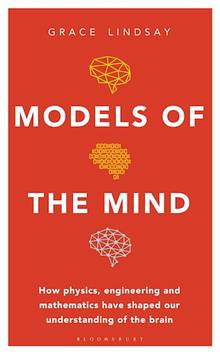Models of the Mind : How Physics, Engineering and Mathematics Have Shaped Our
Lindsay, Grace
Éditeur : BLOOMSBURY
ISBN papier: 9781472966421
Parution : 2021
Code produit : 1449633
Catégorisation :
Livres /
Sciences humaines /
Psychologie /
Ouvrages généraux
Formats disponibles
| Format | Qté. disp. | Prix* | Commander |
|---|---|---|---|
| Livre papier | 1 |
Prix membre : 34,20 $ Prix non-membre : 38,00 $ |
*Les prix sont en dollars canadien. Taxes et frais de livraison en sus.
Description
The brain is made up of 85 billion neurons, which are connected by over 100 trillion synapses. For over a century, a diverse array of researchers have been trying to find a language that can be used to capture the essence of what these neurons do and how they communicate - and how those communications create thoughts, perceptions and actions. The language they were looking for was mathematics, and we would not be able to understand the brain as we do today without it. In Models of the Mind, author and computational neuroscientist Grace Lindsay explains how mathematical models have allowed scientists to understand and describe many of the brain's processes, including decision-making, sensory processing, quantifying memory, and more. She introduces readers to the most important concepts in modern neuroscience, and highlights the tensions that arise when bringing the abstract world of mathematical modelling into contact with the messy details of biology. Each chapter focuses on mathematical tools that have been applied in a particular area of neuroscience, progressing from the simplest building block of the brain - the individual neuron - through to circuits of interacting neurons, whole brain areas and even the behaviors that brains command. Throughout Grace will look at the history of the field, starting with experiments done on neurons in frog legs at the turn of the twentieth century and building to the large models of artificial neural networks that form the basis of modern artificial intelligence. She demonstrates the value of describing the machinery of neuroscience using the elegant language of mathematics, and reveals in full the remarkable fruits of this endeavor.























